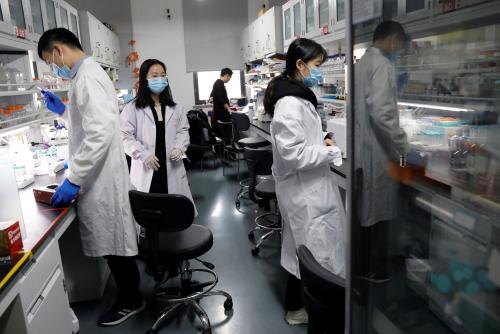Madame Chairperson of the Committee on Migration, Refugees and Population,
Distinguished Members of the Committee,
Ladies and Gentlemen,
It is a particular pleasure for me to welcome you here. Since assuming my mandate I have cooperated with the Council of Europe in fruitful ways and a variety of contexts. I fondly remember your last seminar on internal displacement here in Geneva. I appreciated the invitation by the Council’s Ad Hoc Committee of Experts on the Legal Aspects of Territorial Asylum, Refugees and Stateless Persons to contribute to the development of Recommendation Rec(2006)6 of the Committee of Ministers to member states on internally displaced persons of 5 April 2006. This recommendation is arguably the most authoritative statement on the protection of internally displaced persons in Europe. I also appreciated Chairperson Jonker’s forceful statement recently in Oslo at the celebration of the 10th anniversary of the Guiding Principles on Internal Displacement. Last but not least, your Commissioner on Human Rights, Thomas Hammarberg, and I continue our long-standing cooperation and reinforce our messages on specific situations very effectively.
While Africa could be considered the continent of internal displacement because it has more than 12 of the roughly 25 million displaced by armed conflict worldwide, Europe, with its estimated 2.5 million internally displaced persons, could be called the continent of protracted displacement. While the armed conflict in Georgia in August of this year has tragically reminded us that the threat of war remains a reality in Europe even in the 21st century, 99% of Europe’s remaining displaced fled their homes some 15 to 25 years ago as a result of conflicts arising from rejected independence claims and territorial disputes. In recent years some governments have taken important steps to improve their situation, but overall the situation of most internally displaced people remains a cause for concern.
What, then, is protracted displacement? UNHCR has defined a protracted refugee situation as ”one in which refugees find themselves in a long-lasting and intractable state of limbo, “ i.e., a situation in which “[t]heir lives may not be at risk, but their basic rights and essential economic, social and psychological needs remain unfulfilled after years in exile. A refugee in this situation is often unable to break free from enforced reliance on external assistance.”[1] By analogy, experts participating at a seminar organized by UNHCR and the Brooking-Bern Project on Internal Displacement in June 2007 concluded that protracted IDP situations, in addition to their prolonged nature, exhibit two key characteristics: (1) the process for finding durable solutions has become stalled, and (2) the displaced are marginalized by disregard for or failure to protect their human rights, in particular economic, social and cultural rights.
My missions and visits to Bosnia-Herzegovina, Serbia, Croatia, Turkey, Georgia, Azerbaijan and Armenia over the last years have placed a number of critical observations into stark relief:
- Many of the protracted situations in Europe are the consequence of armed conflicts that had been marked by inter-ethnic violence or even ethnic cleansing. In some of these situations, internally displaced became political pawns. In the absence of a political settlement to the underlying conflicts, they were in some cases deliberately left in limbo and durable solutions or even temporary integration at the location of displacement were discouraged. In other cases, the reality of internal displacement was simply denied. Temporary housing arrangements, segregated schools or limited access to education for IDP children as well as economic and social marginalization are among the immediate consequences.
- Housing, employment and access to quality education are typically the dominant concerns both during protracted displacement and after return. While resources often are scarce in the post-conflict transition phase, IDPs suffer disproportionately since they have to compete for these resources from a marginalized position. Particular difficulties stem from the fact that displacement often marks for IDPs the beginning of a rural to urban transition.
- Protection of property left behind and, ultimately its restitution, are often ignored, hindering IDPs in their efforts to resume their lives and remaining a serious source of grievance and a trigger-point for future conflict.
- Strict application of requirements for legal documentation, coupled with failure to replace or issue new documentation, prevents IDPs in some countries from accessing and enjoying a range of rights: to health, education, property, a livelihood. – and that often years after their initial displacement.
- Where return or integration is agreed in principle, central governments at times fail to exercise sufficient control over reintegration processes at the local level to ensure its implementation. Without clear political signals from the highest levels of government, durable solutions are not prioritized at the local level where local political pressure may support a different result. Discrimination, harassment and denial of political participation by IDPs from minority communities frequently occurs at the local authority and local community level, and they are exacerbated if mixed signals are sent from the central level.
- The absence of political settlements also negatively affects safety and security in return areas, including specific issues such as mine clearance.
- The lack of IDP-specific policies and laws or their belated adoption often added to the problems.
- IDPs subject to multiple discrimination face a level of problems and protection concerns not experienced by other IDPs. Ethnic minority groups not linked to a party involved in the conflict — such as the Roma — are often particularly affected. Donors and Government further fail to recognize vulnerabilities of marginalized groups in the recovery phase, e.g., by cutting funding for collective housing complexes, even though it is the most vulnerable such as the elderly or people with mental disabilities that tend to stay behind. Mental health issues, often rooted in conflict atrocities and exacerbated by the protracted nature of displacement, are frequently neglected and responses underfunded.
- IDPs either are not involved in peace processes or they become an object of political manipulation, with the result that they cannot properly the agenda in accordance with their best interests, needs and rights.
In light of these problems, we have come together today to address the following three issues:
- What are the challenges and the opportunities to enable durable solutions for internally displaced persons (IDPs) in protracted situations, in line with States’ human rights obligations and as spelled out in CoE Recommendation (2006)6?
- In a protracted situation where durable solutions for displaced persons might not be feasible, how may we reconcile the right of IDPs to fully participate equally, as citizens or habitual residents of their country, in social and economic activities, in access to justice and protection from violence, with protection and preservation of their right to return?
- What could be the role of the Parliamentary Assembly, and in particular its Committee on Migration, Refugees and Population, in advancing protection of the human rights of IDPs and placing the issue of protracted displacement as priority on the Council of Europe’s agenda in 2009?
This morning’s presentations will address these issues, and I sincerely thank my colleagues from the organizations represented here for having so graciously accepted the invitation to share their views with us.
Not wanting to duplicate what we will hear, I conclude by offering the following key principles to guide our critically-needed efforts to tackle protracted displacement situations in Europe:
- Efforts to solve the frozen conflicts in Europe must be renewed. Real solutions for IDPs will remain elusive if conflicts linger on.
- An absence of political solutions cannot serve as an excuse for failing to address protracted displacement situations. The government retains the primary responsibility to it citizens regardless of a frozen conflict and even in the absence of territorial control.
- The point of departure for discussions about protracted situations must be the recognition first, that internally displaced persons remain — despite their being displaced — citizens of the country they have not left and, second, that as such, they are fully entitled to enjoy the full range of human rights available under the European Human Rights Convention, the two UN human rights Covenants and other applicable human right treaties. They must, therefore, enjoy the same level of protection and realization of these rights as the rest of the population, though respect of their rights may require specific and additional effort. In other words, the displaced have specific vulnerabilities and protection and assistance needs not shared by the rest of the population, and they are entitled to measures that address these needs. Where needed, they are therefore entitled to differential and preferential treatment and such treatment shall not be deemed “discriminatory”.
- Actively addressing specific needs and vulnerabilities while respecting IDPs’ rights of participation and of non-discrimination means that internally displaced persons should be integrated into mainstream society to the fullest extent possible, even if chances for return remain. This necessitates investment into the provision of adequate housing, education, creation of livelihoods, and in some contexts measures to protect against discrimination. We must recognize, and reflect in our actions, that enabling the displaced to lead a normal life and protecting their right to return are not mutually exclusive. Rather, people who are in control of their lives and who are not hampered by continuing rights violations are more likely to go back and rebuild than are individuals or communities who have been marginalized and who suffer from dependency syndrome.
- In all situations, there are categories of particularly vulnerable persons such as traumatized persons, single-headed households, persons with disabilities, or elderly persons without family support who continue to be in need of humanitarian assistance and support. Targeted attention and action will be necessary to enable them to find solutions.
- When protracted conflicts are resolved by peace agreement or other means, the right of internally displaced persons to choose between return to their homes, local integration at the site of displacement, or resettlement to another part of the country must be respected. That choice must be voluntary and informed, and it must be a meaningful choice. That means that authorities have a responsibility to enable conditions for all three to be viable options, and not merely to favor one approach to the exclusion of the others.
- Authorities must also take the necessary measures in a number of areas to ensure that the solution chosen will be sustainable in the long term. That means first: to ensure safety and security, particularly at locations of return. It also entails restitution of property and repair or rebuilding of houses and basic infrastructure. Finally, we must not overlook sustainability of return in economic and social terms, including non-discriminatory access to basic services and economic opportunities.
- In all of this, internally displaced persons must be informed and consulted on all relevant steps, and to the extent possible, receive the opportunity to participate in decisions affecting them.
[1] Executive Committee on the High Commissioner’s Programme, Protracted Refugee Situations, EC/54/SC/CRP.14, 10 June 2004, para. 3.


Commentary
Protracted Displacement in Europe: Perspectives and Solutions
November 26, 2008